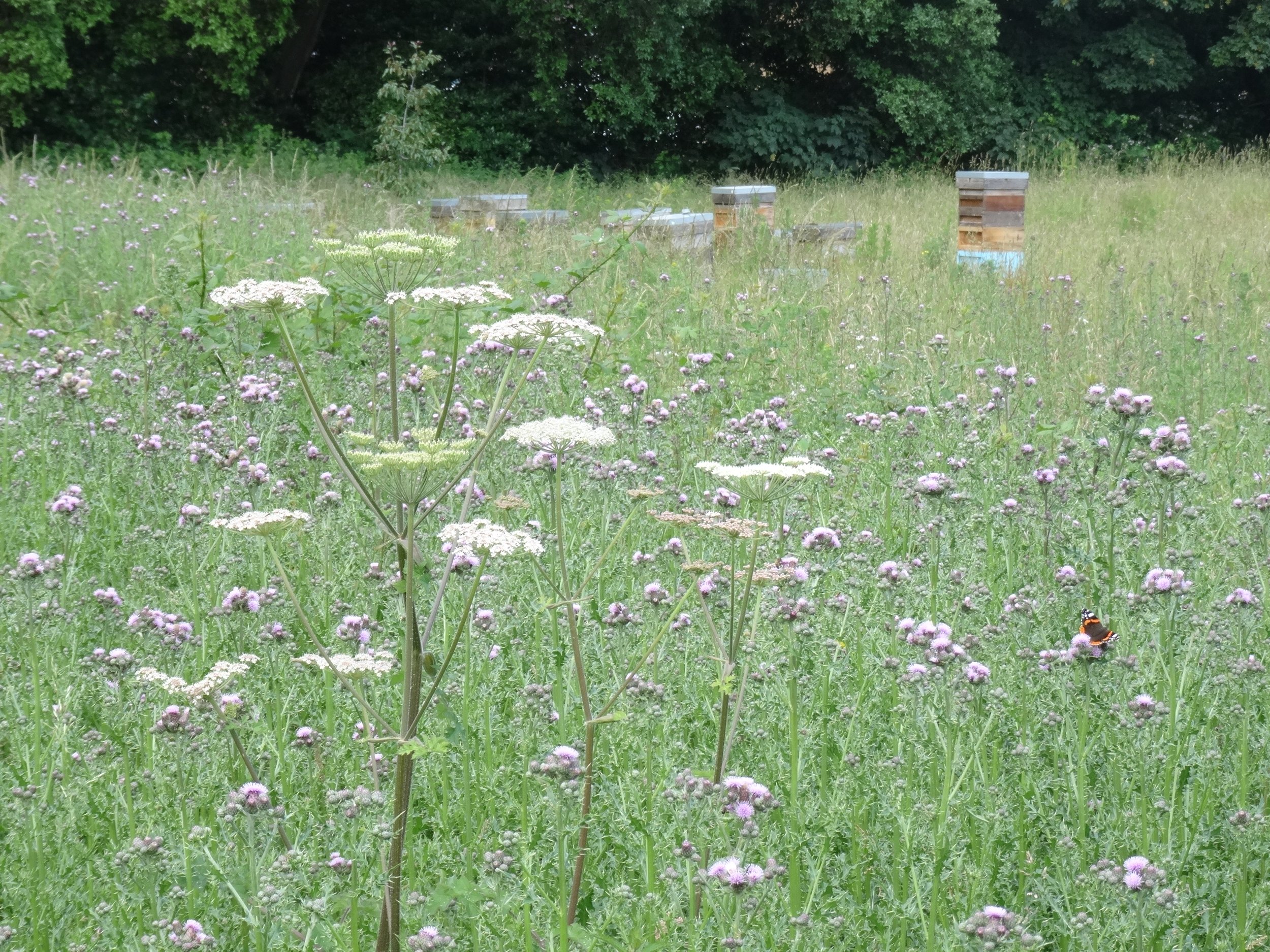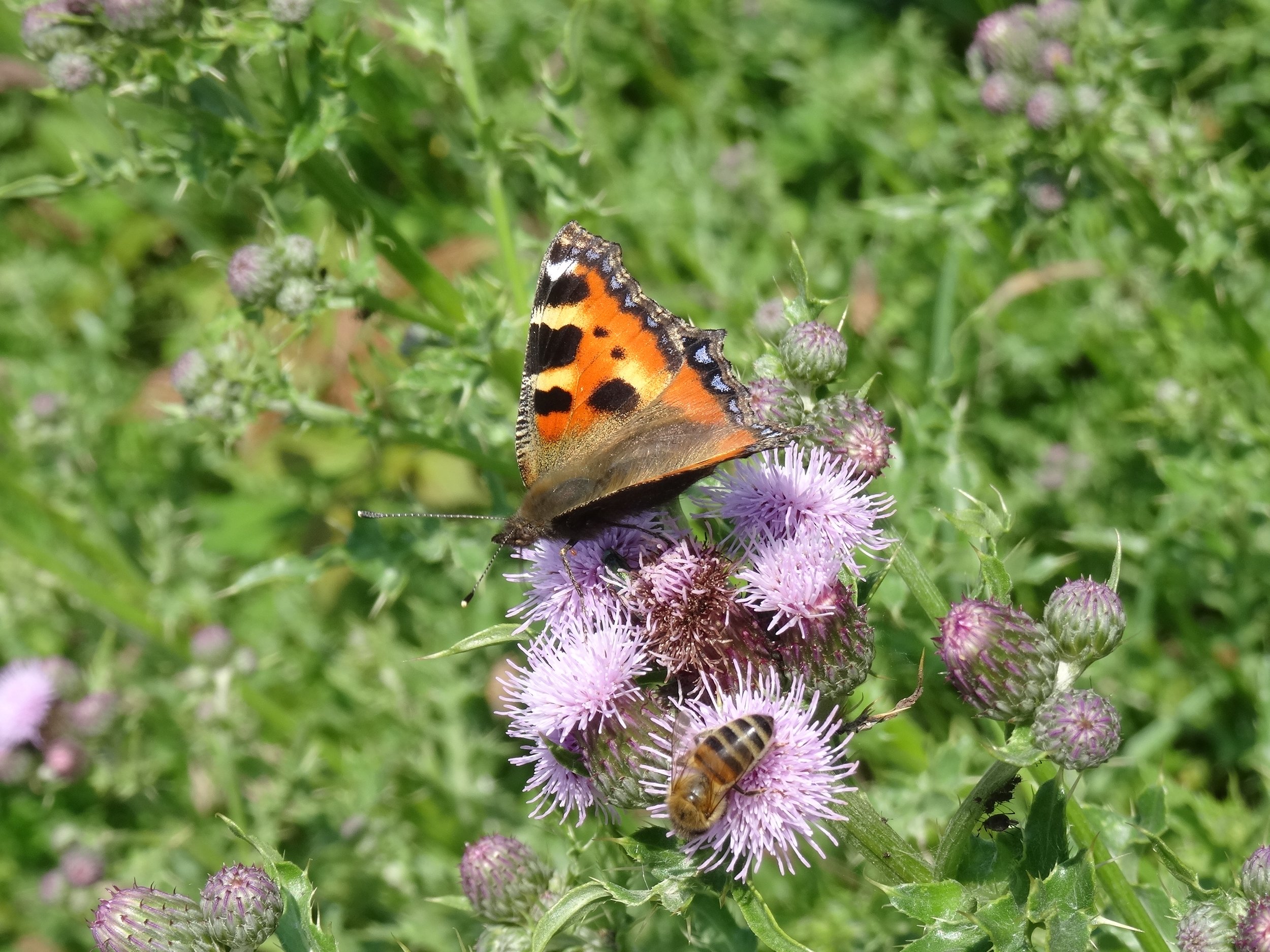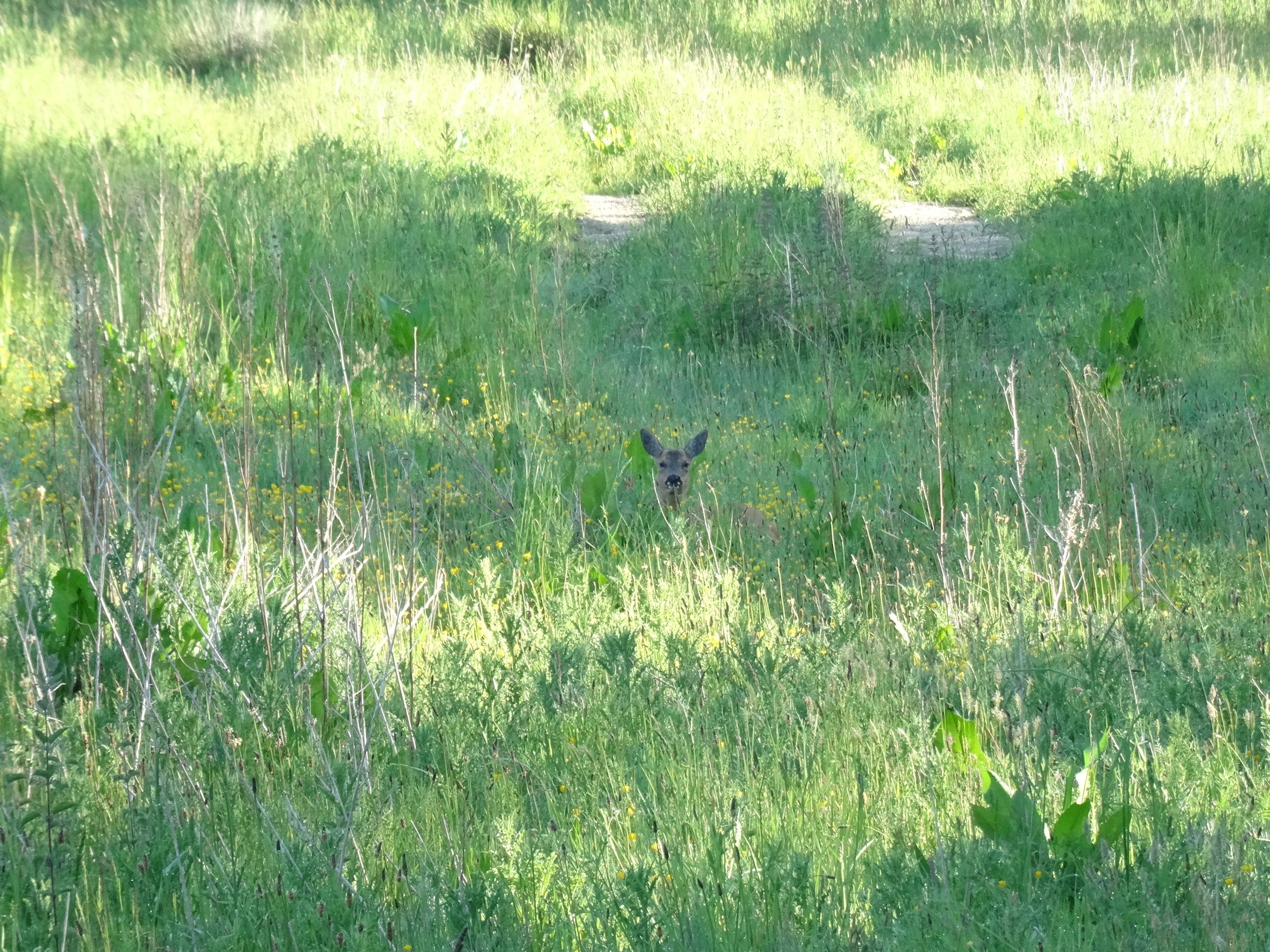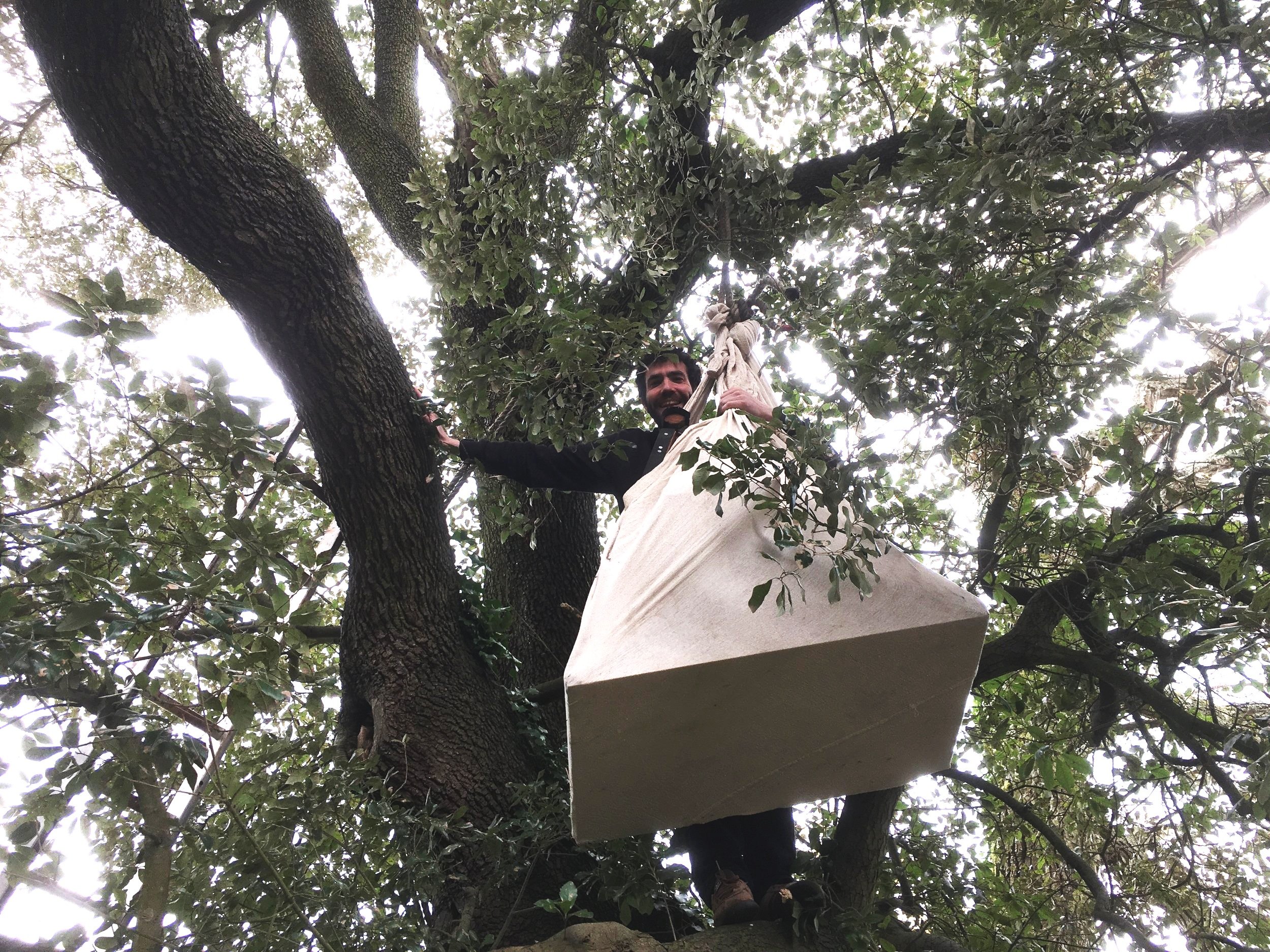“If all mankind were to disappear, the world would regenerate back to the rich state of equilibrium that existed ten thousand years ago. If insects were to vanish, the environment would collapse into chaos.”
In Britain, we have lost 97% of our wildflower meadows since the end of WW2. Here at Furzedown Farm, we decided to give our one and only field back to nature and the 3 acre field is now managed as a wild flower meadow.
In Britain, there are over 250 species of bee, 60 species of butteflies, 2500 different moths and 1000’s of different insects, of which many rely on wild flower meadows. Meadows are also an important habitat for various species of small mammals, reptiles, birds and bats. Unfortunately, many of the different species that rely on meadows are now in decline due to such a dramatic loss of this habitat.
During the first lockdown, Tom made a barn owl nesting box, which we put up in an ever green oak on the edge of the meadow. Good old Tom.
A Roebuck in the meadow. Photo by Gary Woletz. Roe deer are native to the UK. They shed their antlers each Autumn and regrow them in winter. They will shed the felt from the antlers in Spring.







![Stinging nettles [pictured in the foreground] are an important plant for red admiral, small tortoiseshell, painted lady and comma butterflies. The butterflies lay their eggs on the leaves, which the caterpillars feed off after hatching.](https://images.squarespace-cdn.com/content/v1/594a615a6b8f5bfb66d54c01/1643300790986-A5IWXIMMEP9T8WSZ6355/mead.jpg)

